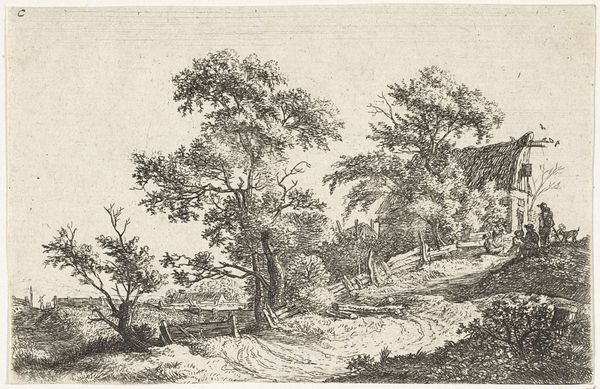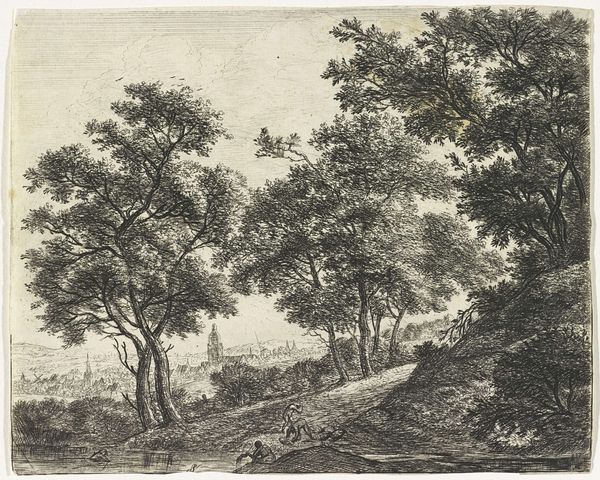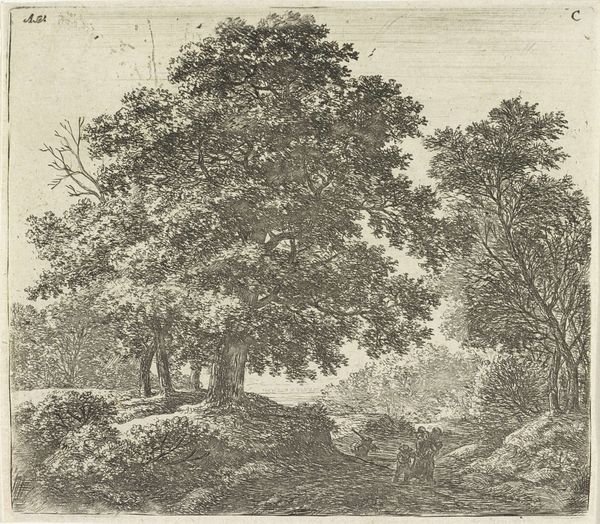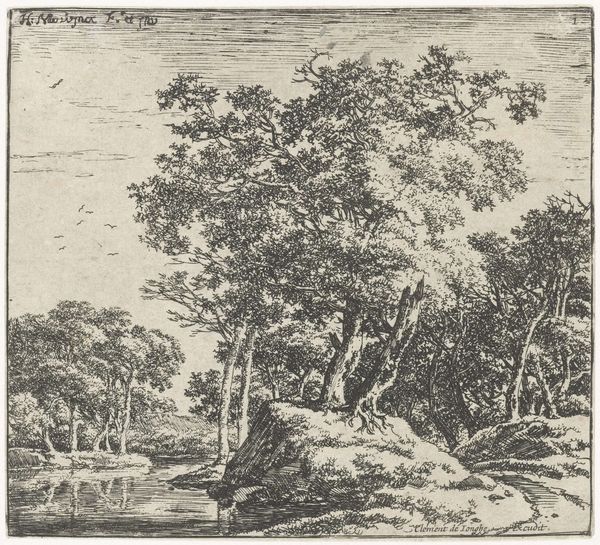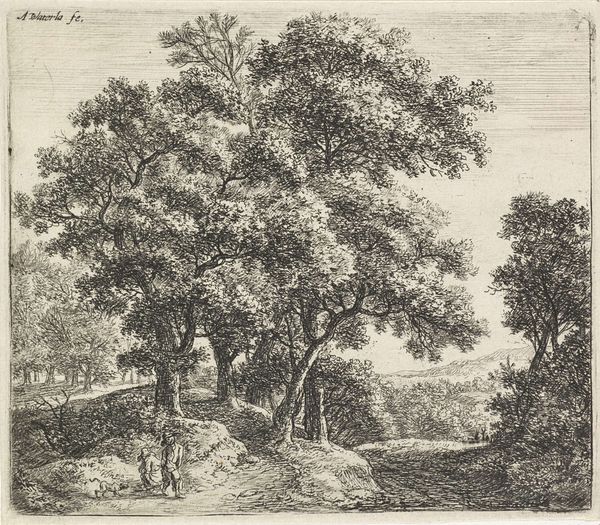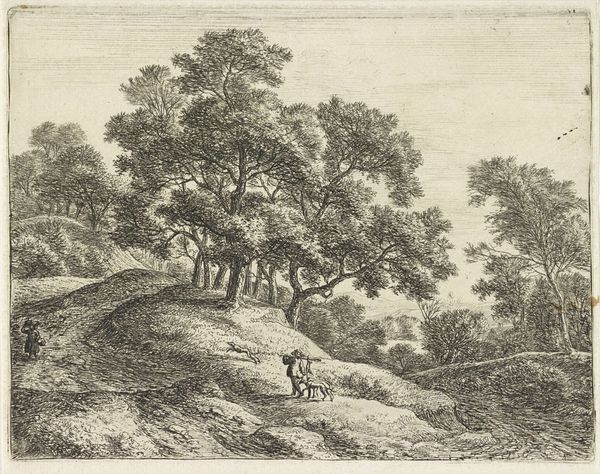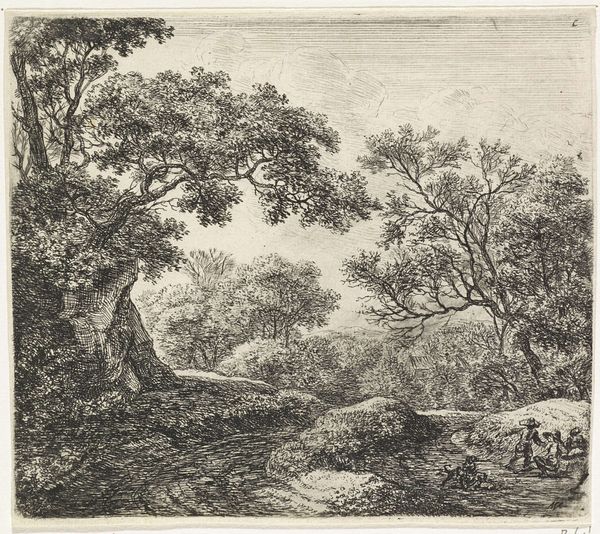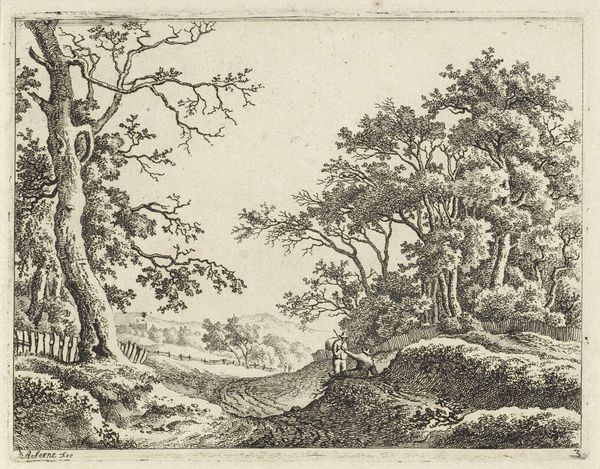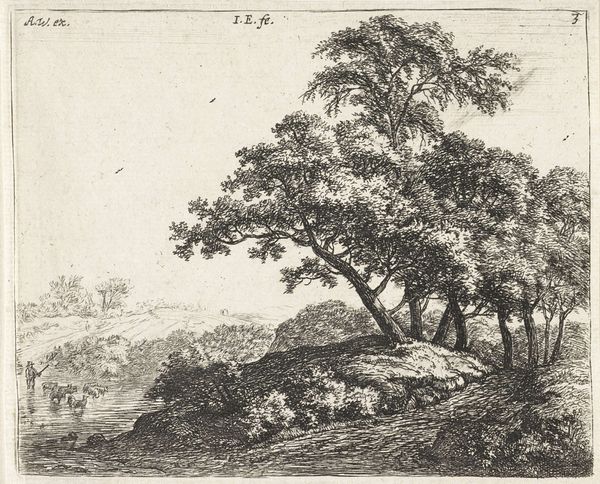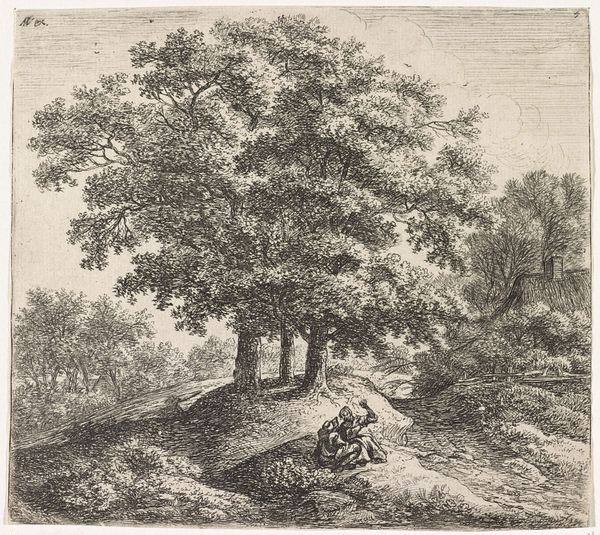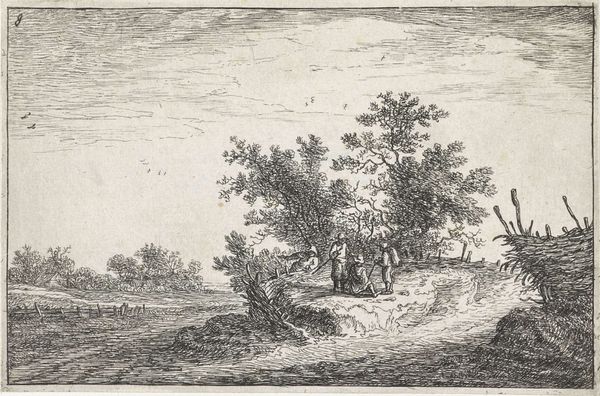
drawing, etching, paper, ink
#
drawing
#
pen drawing
#
dutch-golden-age
#
etching
#
landscape
#
paper
#
ink
#
pen work
#
genre-painting
Dimensions: height 106 mm, width 159 mm
Copyright: Rijks Museum: Open Domain
Editor: So, here we have Anthonie Waterloo’s "Two Figures under an Oak Tree," a drawing made sometime between 1630 and 1717, done with pen and ink. It's…intricate, almost overwhelmingly so. The density of the trees is what really strikes me. What do you see in this piece, beyond the obvious? Curator: Ah, beyond the bark and branches! I'm transported to a humid afternoon in the Dutch countryside. It's an idealized vision, wouldn't you say? Waterloo gives us nature as a cathedral – sheltering, perhaps even a bit watchful. Notice the two figures huddled near the oak's base. Are they lovers? Storytellers? Lost souls finding temporary respite? What do you make of the little architectural detail in the distance? Editor: That small architectural element feels almost like a beacon, but such a small and unassuming beacon! Perhaps offering guidance or…maybe just contrasting the imposing wildness surrounding the figures. Are those carefully placed groupings of ink blots designed to give depth? Curator: Precisely! He's practically choreographing light. The strategic pen work tricks our eye into believing in leaves rustling and shadows deepening. Though it might appear a simple scene, Waterloo is carefully playing with perspective, pulling us into a miniature drama. What does the oak tree itself say to you? Does it remind you of anything? Editor: Hmmm… a sense of permanence, I think. A solid unchanging observation post. Looking at the Rijksmuseum’s details, I was not expecting such emotion from pen and ink. Curator: Agreed. These aren't just landscapes. They're whispers from another century. Each carefully etched line carries a story, waiting to be unfolded. It makes one wonder, doesn't it, what stories *we’ll* leave behind?
Comments
No comments
Be the first to comment and join the conversation on the ultimate creative platform.

